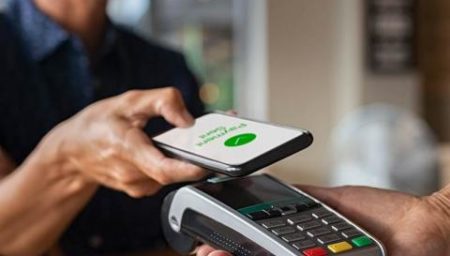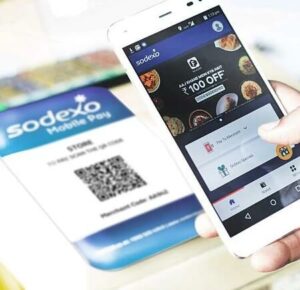Enabling secure and innovative payment experiences via payment tokenization

 More and more consumers are embracing mobile payment and appreciate its simplicity, convenience, safety and speed. During the Covid-19 pandemic, mobile payment grew significantly and helped many stores maintain traffic. Sodexo Benefits and Rewards services aims to offer mobile payment to the highest number of meal card users. To do so, it has established a partnership with IDEMIA to enable the digitization of cards on consumer mobile devices.
More and more consumers are embracing mobile payment and appreciate its simplicity, convenience, safety and speed. During the Covid-19 pandemic, mobile payment grew significantly and helped many stores maintain traffic. Sodexo Benefits and Rewards services aims to offer mobile payment to the highest number of meal card users. To do so, it has established a partnership with IDEMIA to enable the digitization of cards on consumer mobile devices.
We asked Eric Lemoine, Sodexo Benefits and Rewards Services Payment Competence Center Director, and Philippe Ledru, IDEMIA VP Sales – Digital Payments, to answer a few questions on this partnership and share how this offer will benefit users and merchants.
Eric Lemoine: We reached out to IDEMIA to help us build the most secure mobile payment platform, compatible with different payment wallets including those from Apple, Google or Samsung and our own Sodexo Pay. IDEMIA is helping us digitize our meal cards thanks to its full end-to-end SaaS capacity and existing connectivity with network processors.
Philippe Ledru: Our platform is also certified by several major domestic and international players, for example in France, the United States and Japan. It’s an important guarantee for our clients. Our global reach allows us to provide support in different countries and we have experience with different processors. As such, in just 4 months, mobile payment was up and running for Sodexo card users in France and in Brazil.
Eric Lemoine: For card users, it’s actually very simple. All they have to do is download the Sodexo app on their mobile phone, activate Sodexo Pay and define their preferred authentication method (wallet code or biometrics). Then, they simply need to select the card to enable mobile payment and wait a few seconds until the card digitization is complete. And that’s it, they can then pay in stores with their mobile! In the background, it’s a bit more complex with the use of near-field communication (NFC) technologies to enable contactless payments, and tokenization to digitalize the card to protect sensitive card information.
Philippe Ledru: We act as a go-between between the payment wallet provider and Sodexo Benefits and Rewards Services. We generate alternative data to the card number, also called a token. We then distribute this token to the payment wallet used by the end user – it can be Sodexo Pay or an Original Equipment Manufacturer (OEM) payment wallet such as Apple Pay for example – and the user pays with this token. All of this happens nearly instantaneously for the user, but there’s a lot going on behind the scenes to ensure total confidentiality of the card data.
Eric Lemoine: We have seen very rapid adoption by our cardholders in France and in Brazil. It is clear that mobile payment is becoming more and more mainstream, and even a standard. But not only is the number of users increasing, the number of transactions is also growing quickly. And we have observed that merchants are embracing mobile payment as well. There are significant advantages for them: there is no payment limit or threshold, and the client does not have to enter a PIN code, meaning payment is immediate. Mobile payment can also help merchants attract new clients, often younger ones, who favor this payment method.
Philippe Ledru: It is estimated that 10 to 15% of cards are digitized today in developed countries. And, as Eric mentioned, usage is growing quickly. The Covid-19 crisis also had a significant impact, considerably accelerating the adoption of contactless payment. With almost all shops now equipped with NFC technology, this means paying with a mobile is possible practically everywhere and all the time. However, in some markets in particular in Asia and in Latin America, other technologies are also emerging such as QR code payments.
Eric Lemoine: We hope to extend mobile payment to more countries in Europe by the end of the year. Our ambition is to provide a frictionless and secure payment experience, where payment is almost invisible, and also limit our impact on the environment, with less plastic cards produced. In addition, we are looking at adding new services to our mobile app Sodexo Pay, such as cashback for example. Innovation is part of our DNA and we are always thinking of ways to enhance the user experience.
Philippe Ledru: We are already working hard to bring mobile payment to new markets, with the aim to reduce as much as possible the time required to activate the service and onboard the different Sodexo entities. In any case, it is clear that the market is moving towards digital and even more choice for users, and that digital forms of payment will play a greater role in the future.